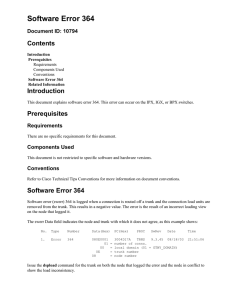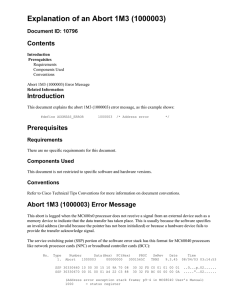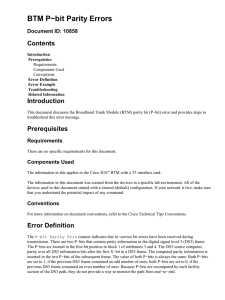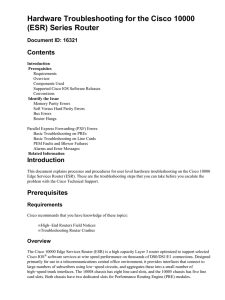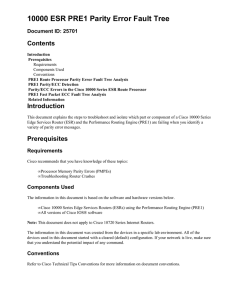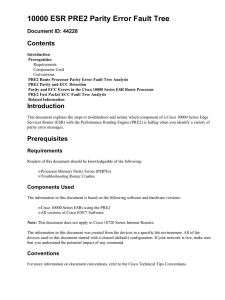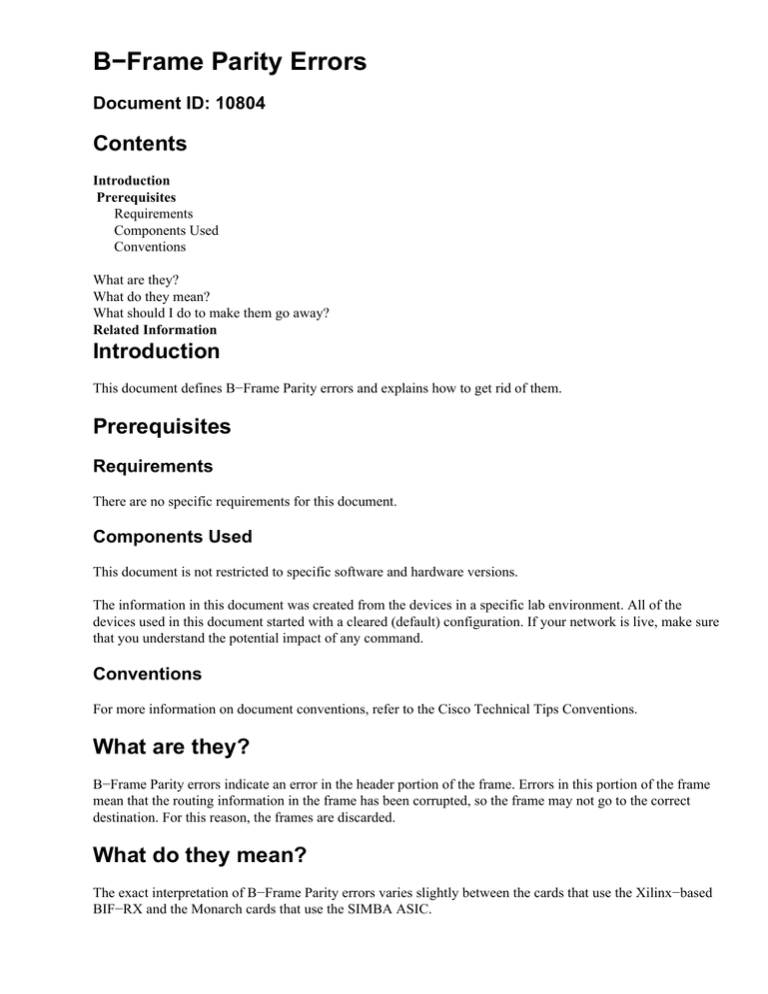
B−Frame Parity Errors
Document ID: 10804
Contents
Introduction
Prerequisites
Requirements
Components Used
Conventions
What are they?
What do they mean?
What should I do to make them go away?
Related Information
Introduction
This document defines B−Frame Parity errors and explains how to get rid of them.
Prerequisites
Requirements
There are no specific requirements for this document.
Components Used
This document is not restricted to specific software and hardware versions.
The information in this document was created from the devices in a specific lab environment. All of the
devices used in this document started with a cleared (default) configuration. If your network is live, make sure
that you understand the potential impact of any command.
Conventions
For more information on document conventions, refer to the Cisco Technical Tips Conventions.
What are they?
B−Frame Parity errors indicate an error in the header portion of the frame. Errors in this portion of the frame
mean that the routing information in the frame has been corrupted, so the frame may not go to the correct
destination. For this reason, the frames are discarded.
What do they mean?
The exact interpretation of B−Frame Parity errors varies slightly between the cards that use the Xilinx−based
BIF−RX and the Monarch cards that use the SIMBA ASIC.
For the BIF−RX based cards, this error means that the first word had an error in the horizontal parity. For the
SIMBA, this error means either one of the first four words had an error in the horizontal parity, or that the
intermediate, vertical parity BIP−16, that covers the first seven words, had an error.
What should I do to make them go away?
They are errors on the point−to−point data path, so they fit into the general category of debug. These errors
are generally seen with BIP−16 errors and can be anywhere from the BCC cross−point, backplane to the line
or trunk cards. Isolation is the difficult part with these errors, due to a long path through multiple cards which
is mostly entirely unique to a particular slot to slot transmission. One needs to use all information available to
minimize the number of pieces of hardware that are suspect.
If multiple cards report the errors, there is a good chance that a transmit path problem exists. One clue to the
source might be a particular card or port which does not show any errors, since it is less likely to send to itself.
Related Information
• Cisco WAN Switching Solutions − Cisco Documentation
• Guide to New Names and Colors for WAN Switching Products
• Downloads − WAN Switching Software ( registered customers only)
• Technical Support & Documentation − Cisco Systems
Contacts & Feedback | Help | Site Map
© 2014 − 2015 Cisco Systems, Inc. All rights reserved. Terms & Conditions | Privacy Statement | Cookie Policy | Trademarks of
Cisco Systems, Inc.
Updated: Oct 04, 2005
Document ID: 10804

